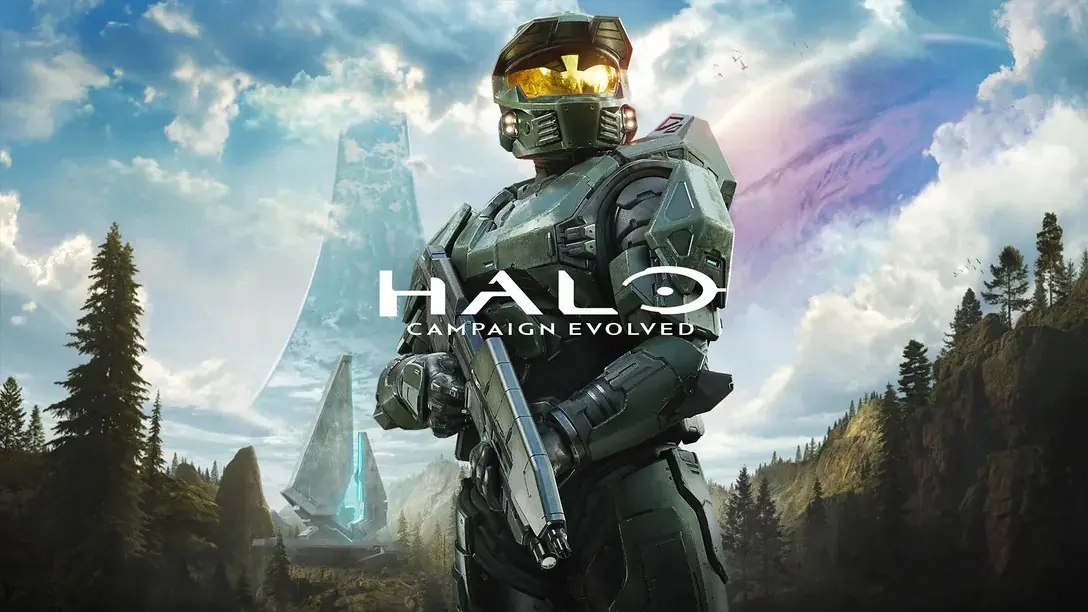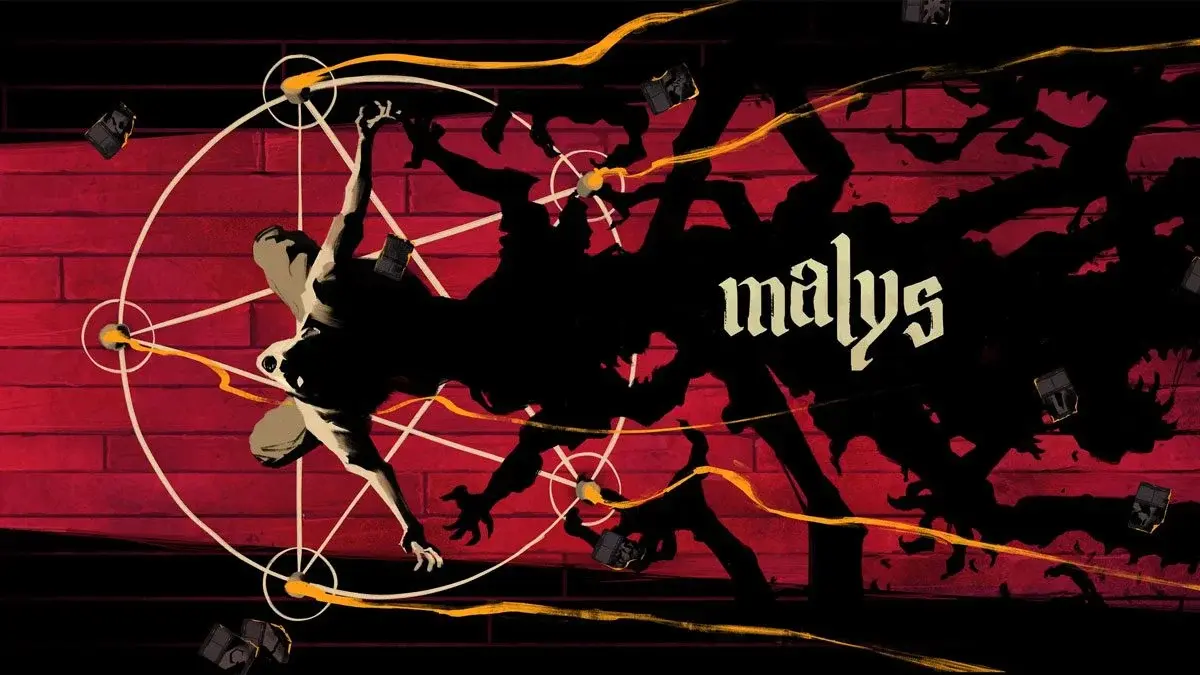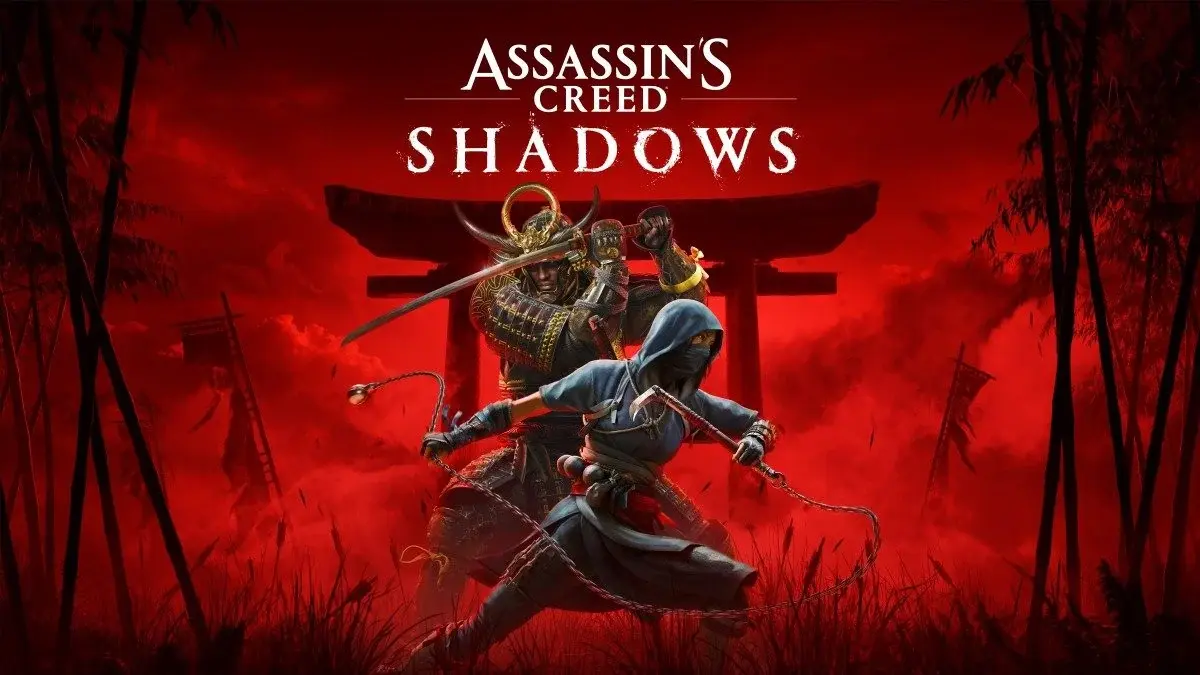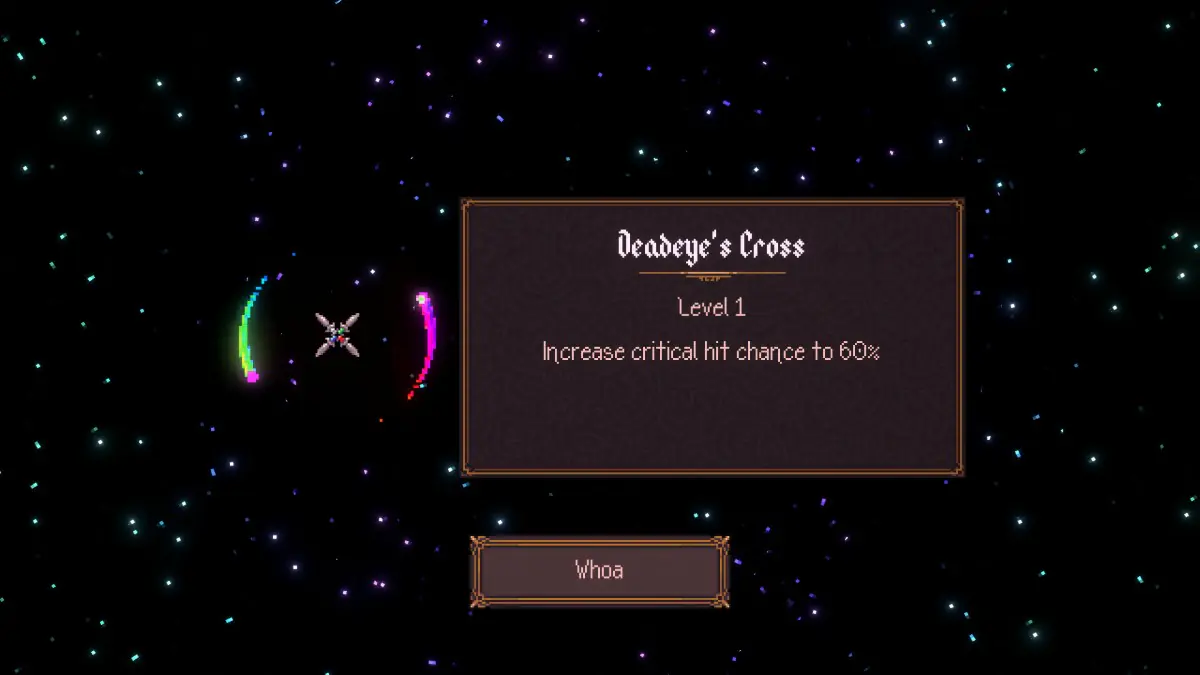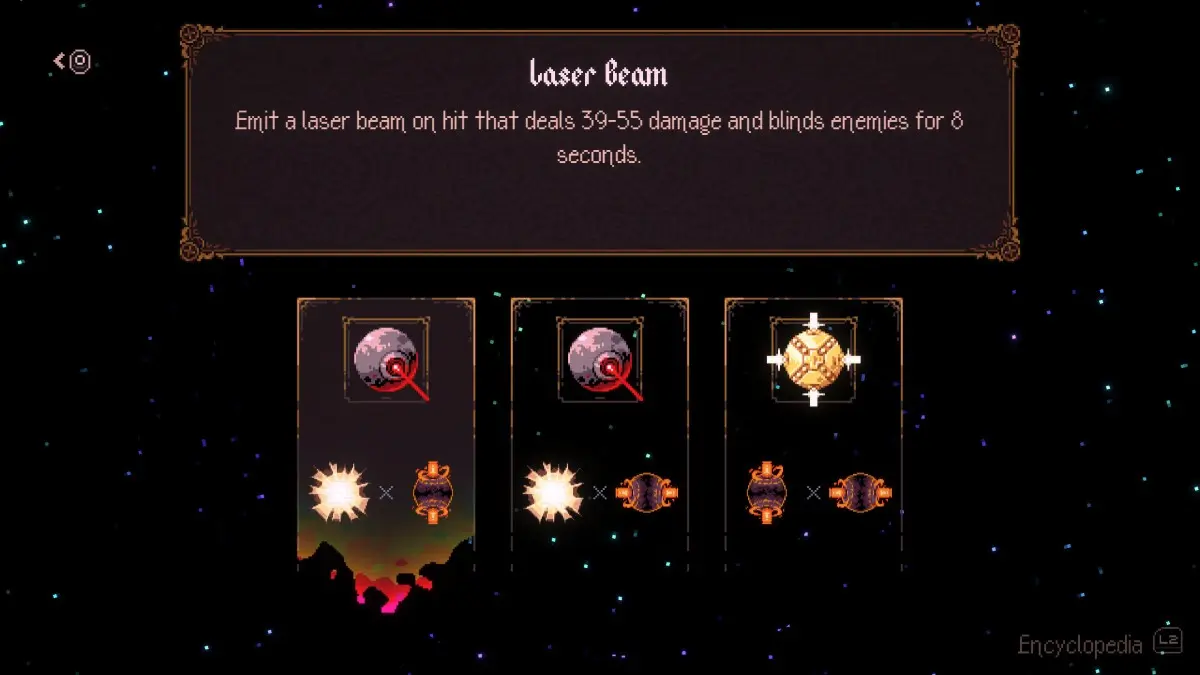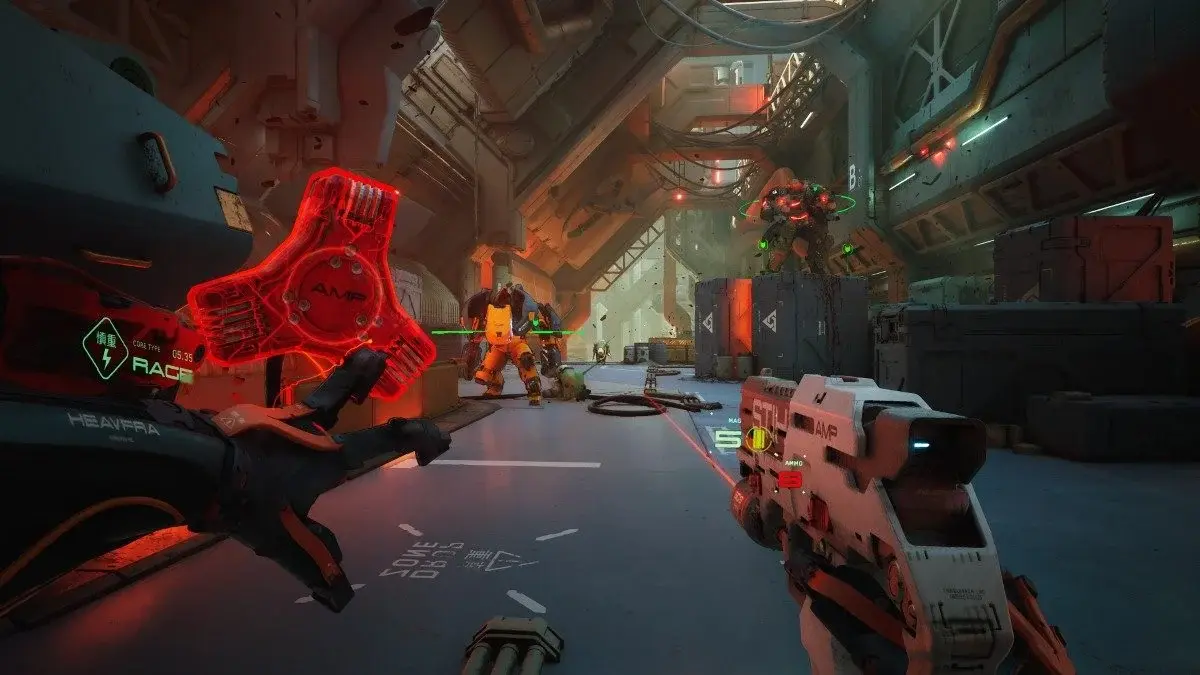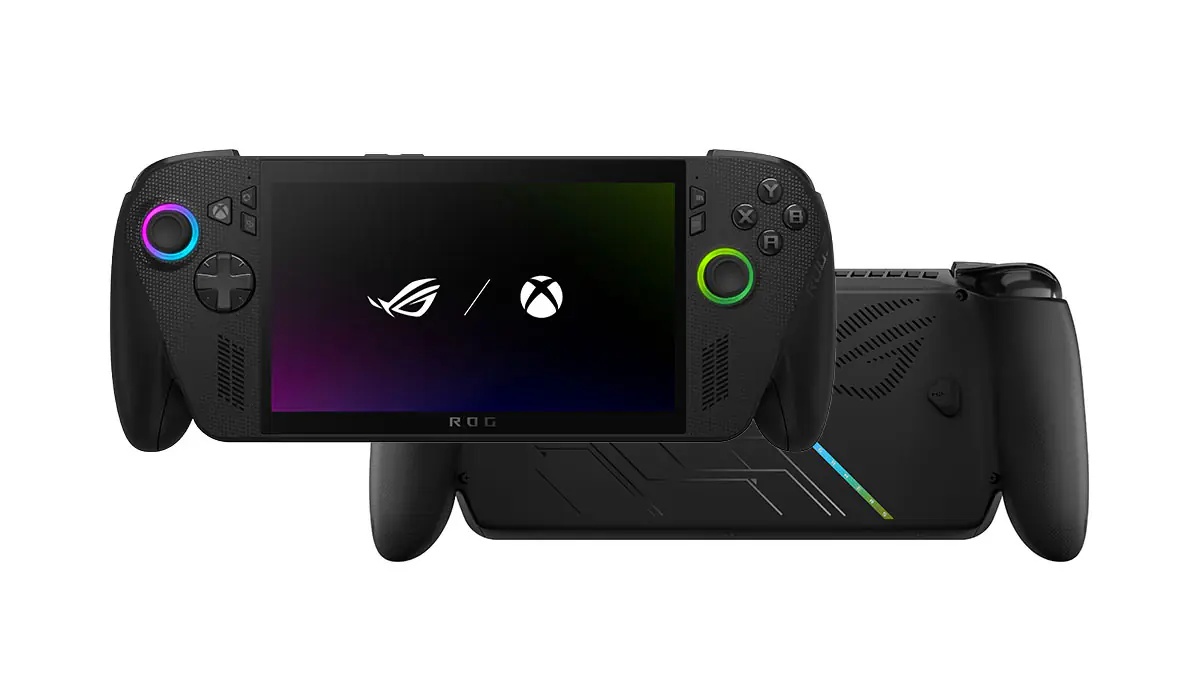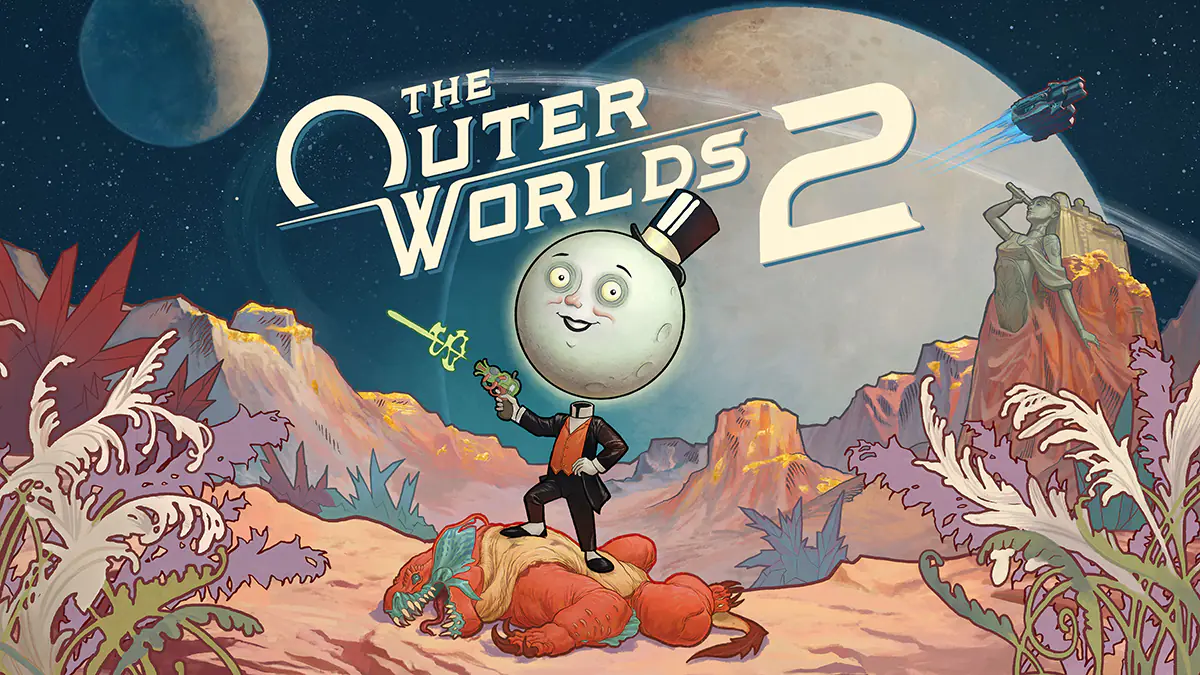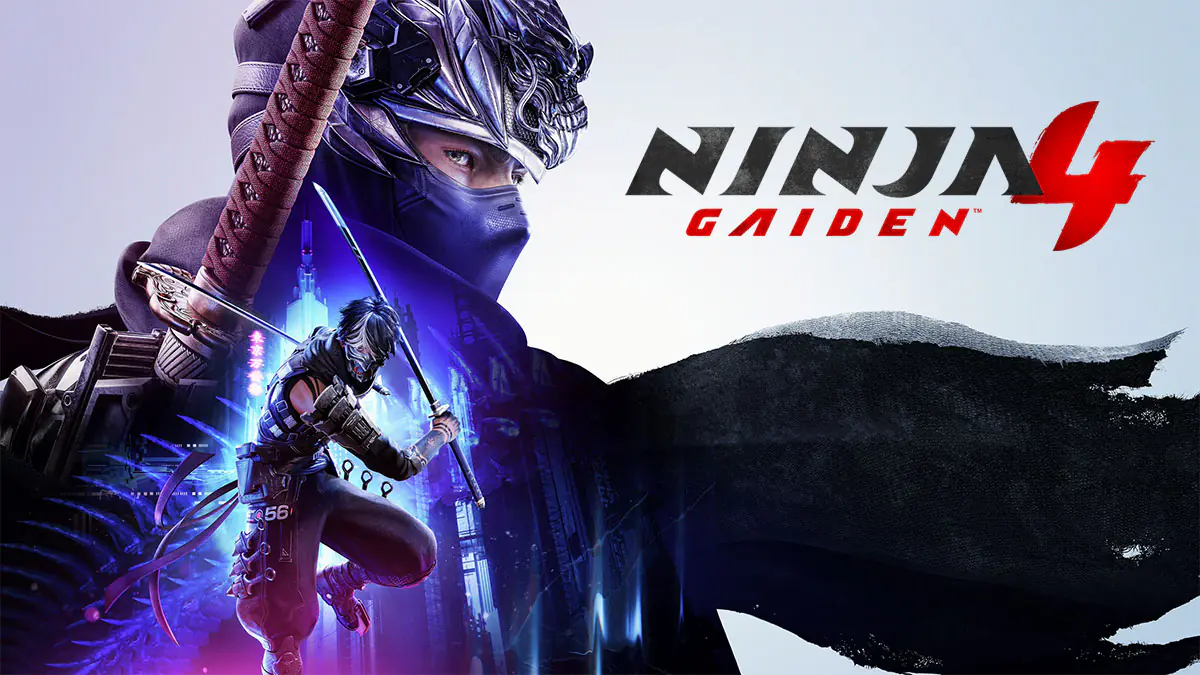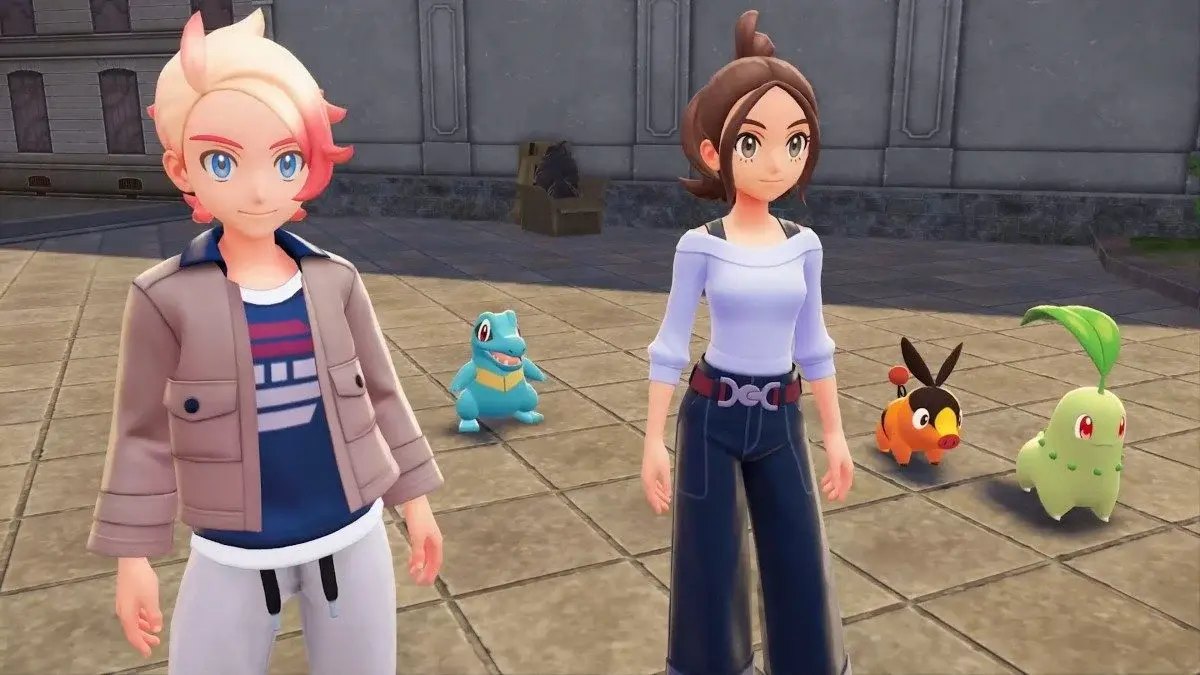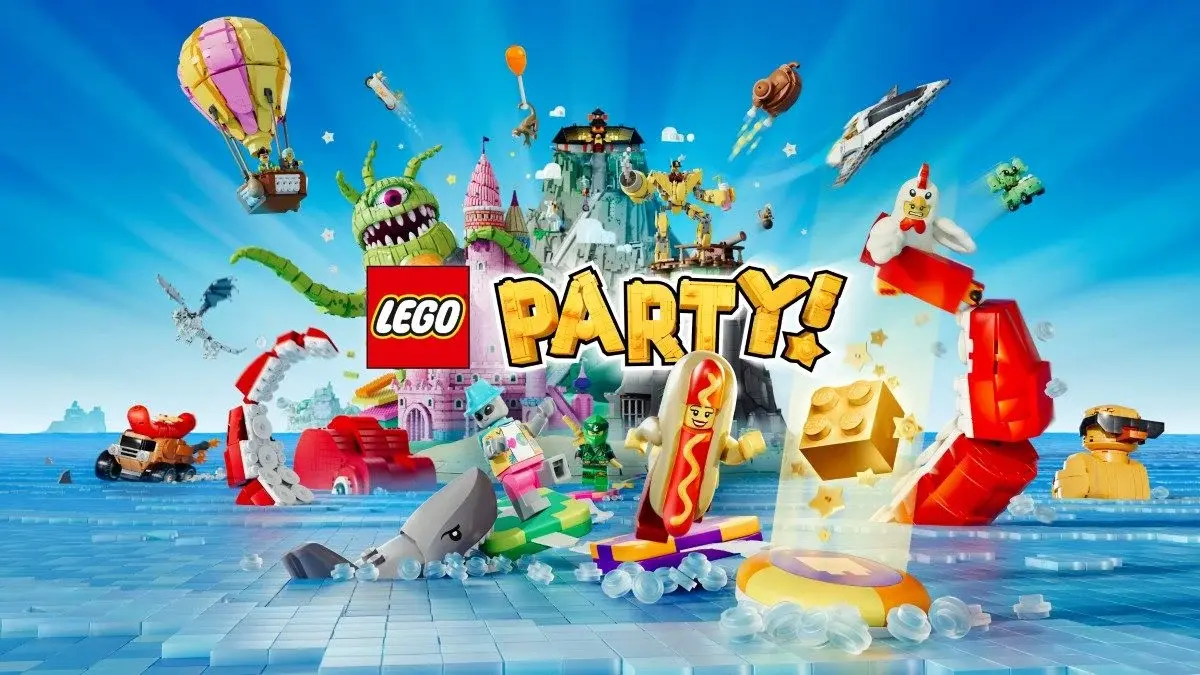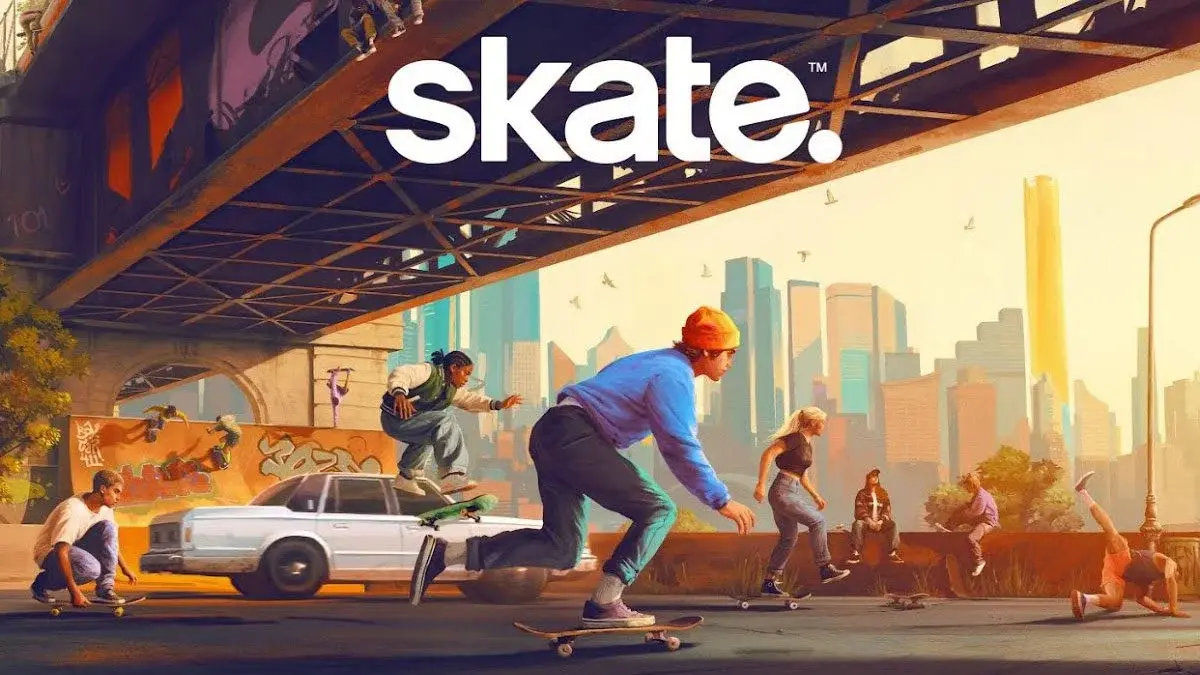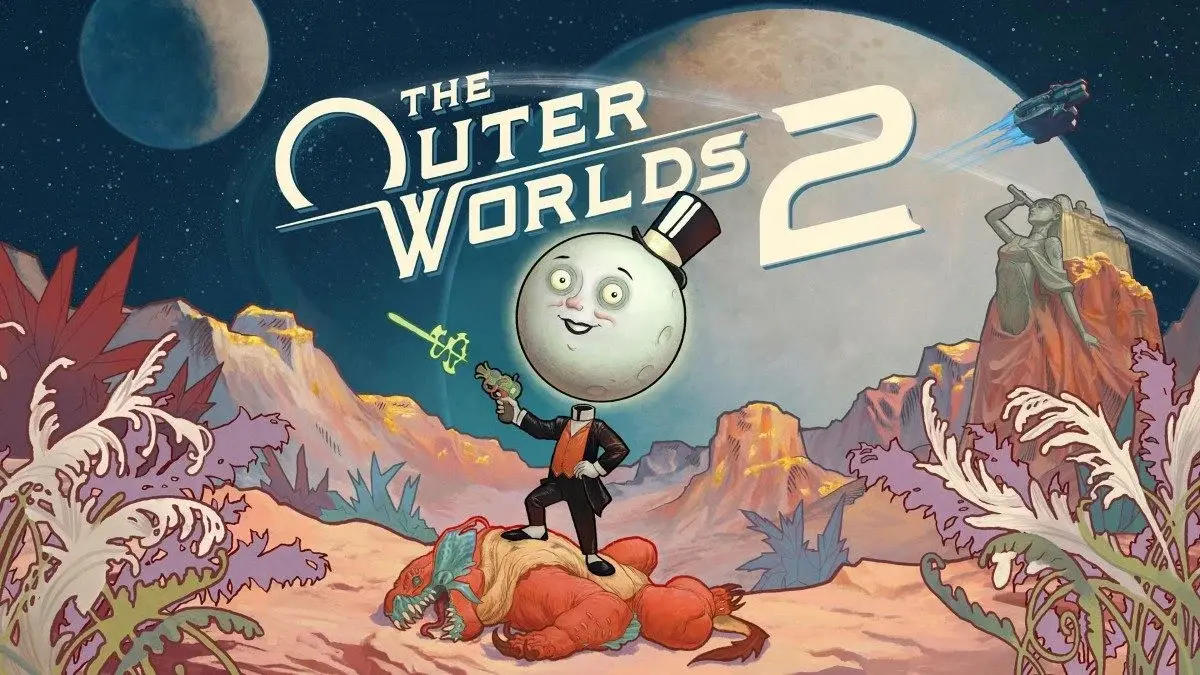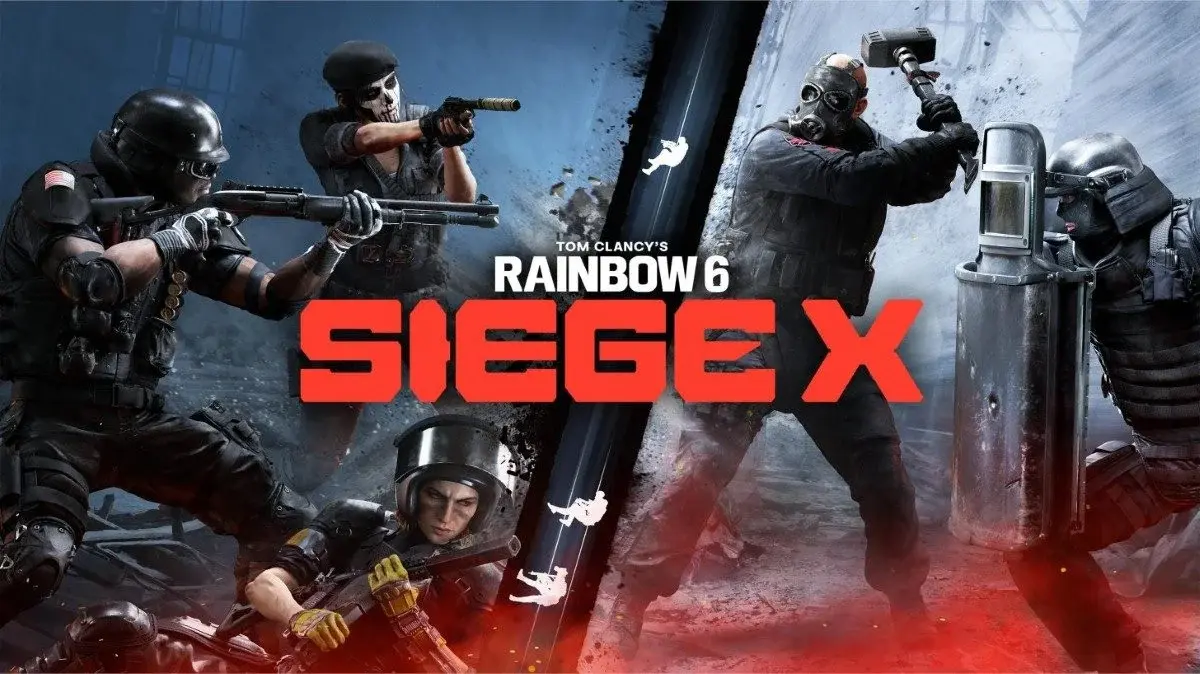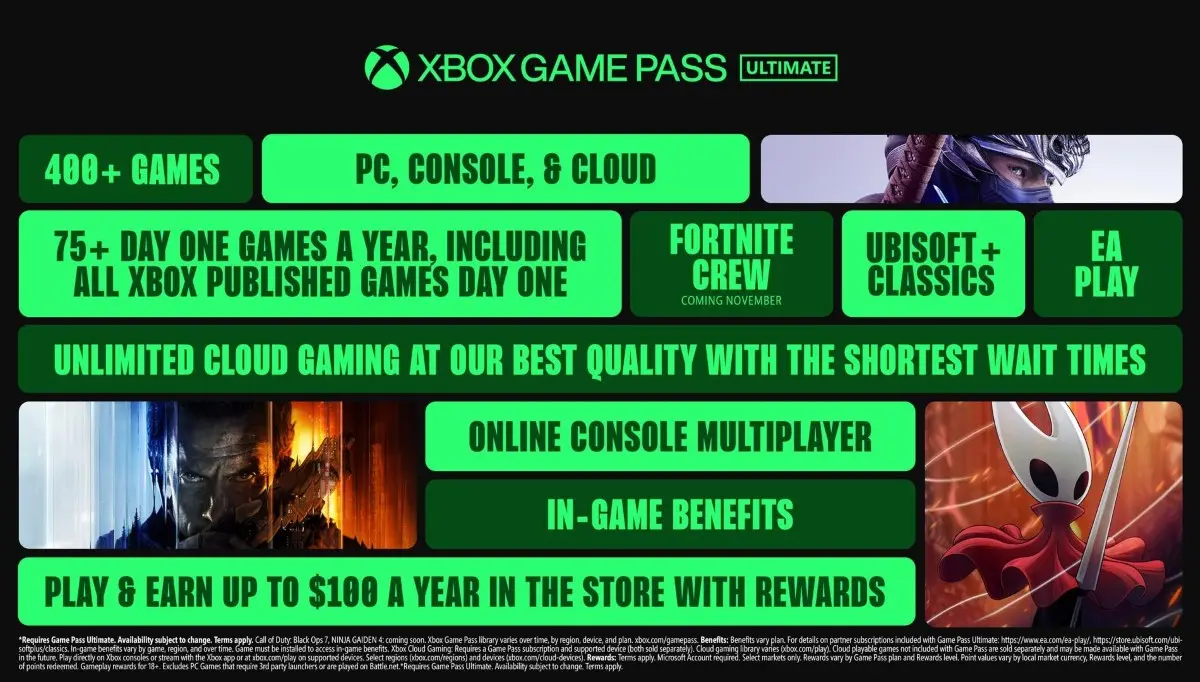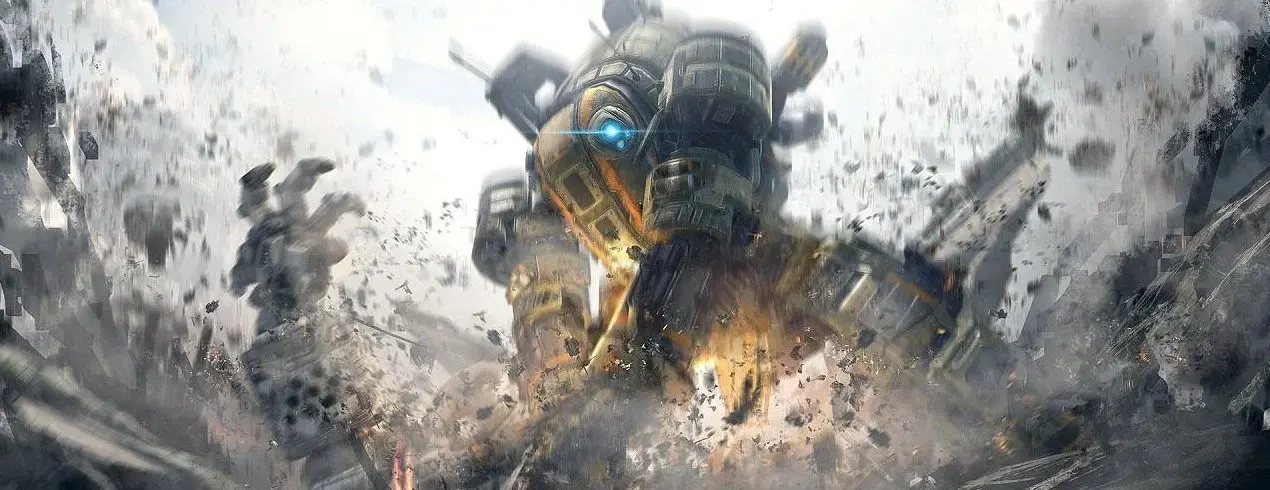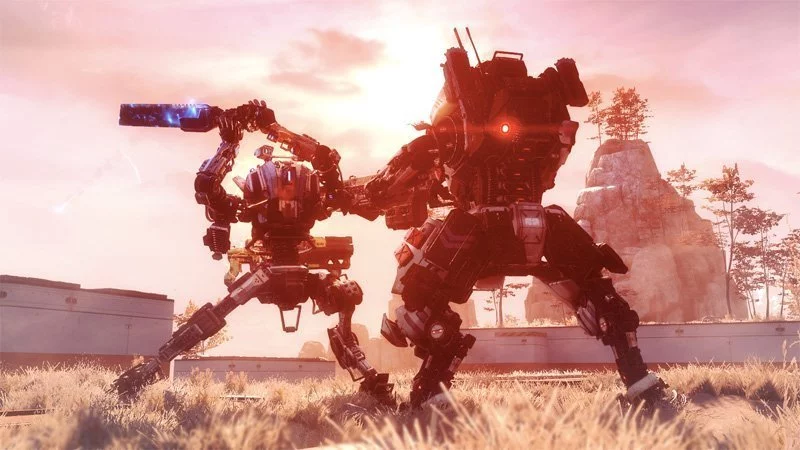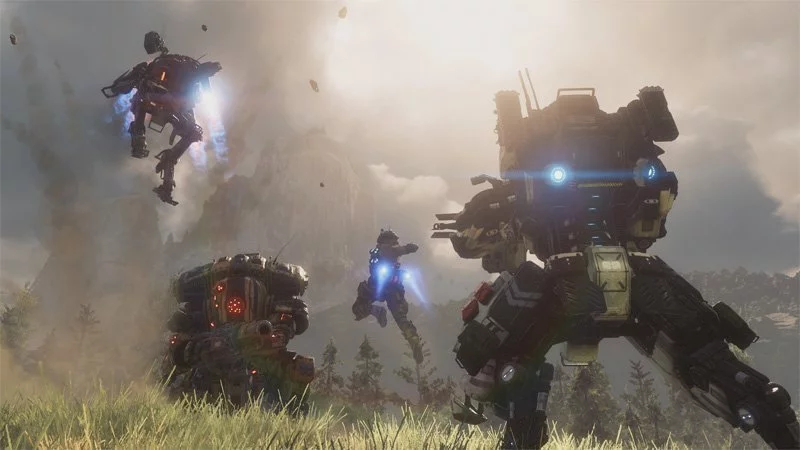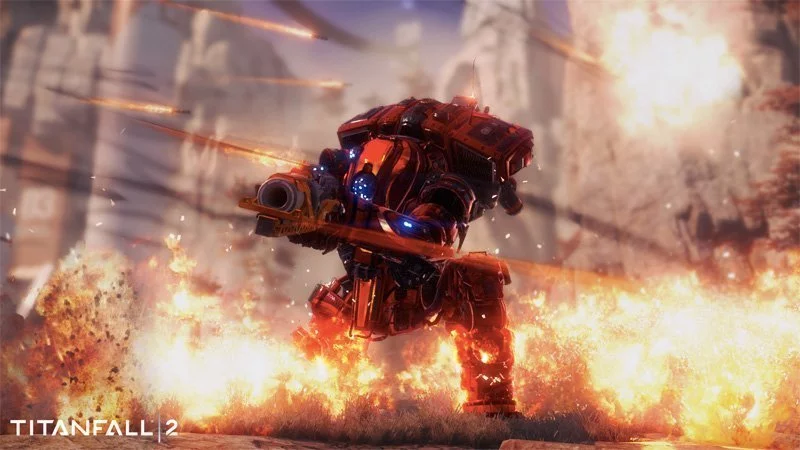Titanfall 2 is emerging from the colossus shadows of Battlefield 1 before we’ve had a chance to catch our collective breath. With just a week between EA’s frontline shooters, in essence the publisher has launched an internal battle of the titans. But for players with the financial capabilities, I assure you there’s scope for both to be regulars in your multiplayer roster. They’re so different that I happily find myself jumping between the two and being prepared for Titanfall just as often as I am to catch an elusive pigeon.
Titanfall 2 returns with Respawn’s fluid gameplay loop, contrasting the mobility of pilots against the bulky power of titans. Boiled down to its core tenets, Titanfall 2 retains the same highly engaging combat. Some quite significant changes have been made to more superficial gameplay – some good, some bad and some needless – but the basics remain constant.
The key to Titanfall 2, as its predecessor, is the stark contrast between mobility as a pilot and epic but cumbersome brute force in command of a titan. Since the former Xbox (and Windows) exclusive launched in 2014, double jumping and wall-running have become commonplace. What was once its unique hook now feels familiar — but the blend of that mobility with titan battles is where it still takes the cake. The two distinct types of combat intertwine seamlessly to craft the most fluid multiplayer combat I’ve played this generation. What you expect to happen you you finesse the controller or keyboard is exactly what you get in Titanfall 2. For a game with a tantalising array of possibilities, the mechanics never waver.
The game modes are a blend of old meets new, headlined by Titanfall 2’s inclusion of three variants of team deathmatch. Fan favourite Attrition returns as the primary mode of Titanfall. It’s the most hectic option, featuring a mix of pilots, titans and A.I. controlled minions. On the otherside of the spectrum is Pilot vs Pilot which, as its name suggests, removes everything except pilots. It eliminates some of the clutter, but in doing so does the same to the heart of Titanfall 2 (the freaking titans) and feels like a poor man’s Call of Duty, now that it too is obsessed with mobility. The comparison between the two is boring yet fair, considering Respawn’s heritage. Removing the brilliance of the Titanfall’s contrasting combat leaves a generic speedy shooter, by 2016 standards, making it the weakest mode. Between them is newcomer Skirmish, which is Attrition without the bots — the purest form of the three TDMs. It loses a little of Titanfall’s DNA without the extra mayhem generated by A.I. combatants, but I can see why some players will prefer only challenging human opponents.
For objective aficionados, Capture the Flag returns alongside the tweaked Amped Hardpoint. It’s classic domination with a second layer that “amps” a hardpoint by adding a shield that degrades overtime, unless a defensive player camps at the base – surprisingly, this didn’t happen often in our review sessions. Last Titan Standing emphasises the mechanical behemoths, but doesn’t feature respawning, and Bounty Hunt is a twist on kill confirmed. It injects a tactical element to the relentless murdering, as every pilot, titan and A.I. grunt or spectre kill nets you cold hard cash: but die before banking it, and your bounty will be halved, and doesn’t count towards the team total until a successful deposit has been made. The two-pronged scoring system mimics kill confirmed, but having to wait to bank the proceeds is an intriguing addition. Do you earn a set amount, say $500, and retreat until it can be salvaged? Do you have enough faith in avoiding death to keep increasing the potential profit? Do you camp at a bank to opposing players before they can turn-in their cash, to stop the opposing team scoring? For such a simple concept, the potential tactical nous is enthralling. Alongside the classic flavour of Attrition, Bounty Hunt will become a mainstay amongst the community.
But it does bring up a gripe with Titanfall that’s returned: encouraging camping. Whilst the fluid movement system foremost inspires constant and lively movement between sprinting, double-jumping and wall-running, Respawn has included the tools campers crave. Cloaking, for one, is a sniper’s dream, and they can dominate on some of the maps. As I mentioned, both Amped Hardpoint and Bounty Hunt encourage camping as a viable tactic to win the objective. It’s hard to consider it a negative when it’s an intentional part of the design, but it’s certainly more evident in Titanfall 2.
That’s largely due to the reduced pacing, which makes all movement a little slower. It takes more time to earn a titan and the frantic movement has been slowed to a more tactical pace as a pilot. It’s still a fast combat loop, but you won’t bounce between corners of the map quite as fast. The introduction of the grappling hook makes virtual movement easier for players of all skill levels, and enhances the customisation of pilots, which was dearly lacking from the first outing — it’s once of several abilities you can choose. The conventional weapon and ability loadouts can all be chopped and changed to a much greater extent, as can enhancements like scopes. Most of it is unlocked automatically, but some (and only some) can be accessed early in exchange for credits earned through playing. It’s nothing that we haven’t seen before, but is thorough enough to feel like you’re being rewarded along the journey to rank 50. The credits system is tied into the old school 1v1 arena mode, Colosseum, which requires tokens to be played, gambling to win something worth more than you spent. PC players will find a nostalgic bliss in its steadfast simplicity, while the imprecision of a controller will probably lead console players to treat it as nothing more than a mini-game.
The class system for titans has been omitted in favour of six diverse machines, each with four loadouts once unlocked. The six are truly unique, ensuring the arenas aren’t inundated by several of the same titan; it’s rare to come across more than a couple of one type deployed in a single match. The negative of losing some customisation options is far outweighed by the benefit of being able to see which titan an opponent is using and planning your strategy appropriately. Luck and timing still have a role to play in titan combat, but you’re given a greater sense of control having some sense of an opponent’s strengths and weaknesses.
The titan conflicts are much more methodical and protracted than pilot combat, but every bit as tense, especially with the increase in wait time between titans. The six titans each play to their strengths, and switching between them increases your knowledge over how to defeat each archetype. Scorch’s giant thermite cannon is powerful but labours after each intense shot, while Ronin is swift with a giant metal sword, but lacks health in defence. Northstar is the sniper class to Ion’s all-rounder status, and Tone’s lock-on ability makes it a strong choice in Last Titan Standing. There’s much more variety compared to the light, medium and heavy variety. When the time comes, you’re calling in a specific titan to play a specific way, not just “a titan”.
While I wholeheartedly endorse the tweaks to pilot combat, weapons and customisation in Titanfall 2, the changes to titans are less understandable. Firstly, they no longer spawn with an oversheild; just health which doesn’t regenerate. Pilot anti-titan weapons don’t do as much damage, and rodeos are now required twice (once to steal a battery that can be used in your or a teammate’s titan to regenerate health and again to plant the grenade), so they’re stronger against pilots. But titan versus titan battles aren’t as spectacular when it’s impossible to recover between them. Once you’ve destroyed one enemy titan, your’s is likely to be in such bad shape, you might as well abandon it and wait to earn another. While it is possible to heal with batteries, it’s too hard to scavenge them yourself amidst the carnage, and teammates rarely donate them. It takes longer to call a titan in Titanfall 2, and it’s easier to lose them. Of course, given time we’ll develop new strategies and approach titan combat more conservatively in an attempt to preserve a titan. But making them rarer hasn’t improved the gameplay, rather needlessly changed it. Titans being frequent and disposable was part of what made Titanfall great. There seems to have been a conscious effort to alter the ratio so it’s firmly played 2:1 in favour of a pilot and a real challenge to skew commanding a titan any longer.
Outside of player control, titans are much more effective. The A.I. has been significantly improved so your titan will actually venture out and get some kills, including of pilots, when left to its own devices. They are instinctively aware of all their abilities and fight more likely a human player. The A.I. foot soldiers grunts and spectres are still brain dead, shooting aggressively as soon as they arrive, but that suits their purpose as cannon fodder.
The map design is merely serviceable, and not as strong as its predecessor. There are some quality maps amongst the roster, but most of them are designed in obvious corridors to bottleneck combat. It’s still a very vertical shooter with the inclusion of the grapple hook, but not as much as it used to be. You’re regularly forced to venture through ambush points guaranteed of death, where the Titanfall of old would have allowed wall-running to circumvent the obvious path. That’s still possible, but the maps don’t allow for it as often. I imagine the focused design towards promoting regular combat is to counteract the slight reduction in pace. Titanfall 2 still wants you to be engaged in combat most of the time, but tries to make it happen through map design quickly leading you towards other players, rather than through sheer speed. While it sounds like a step backwards, I thrive on being forced into combat on a consistent basis. None of the maps will win awards for ingenuity, and they don’t leave the door open for many surprises, but you know what you’re going to get, and that’s regular combat. I’ve got Battlefield 1 for a more tactical approach to objectives. In Titanfall 2 I need kills rapidly to call in a titan sooner.
Pilots attack from all directions, with brisk movement still at the heart of chaotic close and mid-range combat. Ducking and weaving to transverse the interconnected indoor and outdoor segments is where Titanfall 2 perfectly recaptures the charming brilliance of its origins. Inside you’re more likely to find other nimble pilots, whilst outside the monstering mechs are at play. The balance of power between them might have shifted, but both are still able to cause havoc for each other. You’ll need to work harder to perform rodeo kills, but if a titan is already engaged in combat, the sneaky pilot poses a serious threat. The frantic moments where the victor of the David and Goliath bout is one of the most frantically intoxicating of any multiplayer game.
The implementation of the in-grained Networks system should make it easier to connect with like-minded gamers. It allows you to join groups of players with similar preferences to your own. None of them are enforced, there’s nothing stopping headsets working in a “no mics” Network, but they should help communities blossom within Titanfall 2. The most successful Networks are likely to come from existing communities; we could make a Stevivor community, which should help us team-up. We haven’t been able to test the functionality before launch, or for that matter the servers. We played online, but in controlled conditions almost a month before launch. We don’t anticipate any problems, but launch day is a different strain for the servers than a small group playing in a hotel — we’ll update our review if required.
The multiplayer mechanics are introduced to new and returning players – this is the first outing on PS4 – through the series’ first single-player campaign. The original Titanfall didn’t have a campaign, and rubbed it in by using the terminology for a multiplayer mode that was only good for Achievements. Titanfall 2 rectifies that blunder with a bonafide story-based campaign that essentially teaches you how to play Titanfall 2.
The first two missions are tutorials, both as a pilot and controlling a titan, as one would expect. However, the entire tale of Jack Cooper during his rise from infantry minion to pilot of Vanguard class titan BT-7274 teaches every facet of gameplay that’s directly transferable to multiplayer. It strategically unlocks all six titans, strongly encouraging you to try and master all of them, which I certainly wouldn’t have done after settling upon an early favourite in multiplayer. It features every possible combat scenario and some pretty clever quasi-puzzle-platforming levels; okay, the puzzle solving is minimal, but the platforming elements reinforce that Titanfall is an agile shooter.
The campaign is at its best midway through in two chapters back-to-back, which explore the strengths of its mobility through a production factory – working out what’s being built around you is half the fun. Then there’s a quirky and quite ingenious means to control time. You have full control between facing monstrous creatures or IMC goons in alternate timelines progressing through the same level, creating some exhilarating gameplay: would you like difficult fight A or difficult fight B? Swap between them quickly enough and you’ll cunningly obliterate both.
The story is lighter than I expected, and rushes into Cooper’s promotion to pilot; you never really play as him as the rifleman he’s meant to be. It does, however, give some context to the IMC and Militia feud that was scarcely explored in the previous game. It also introduces a bond between titan and pilot that makes the former seem less expendable; although, that doesn’t carry over into multiplayer. The excitable apprehension of Cooper and blunt comprehension of BT’s artificial existence makes for some surprisingly cheerful moments with a dash of humour; their relationship, the only two characters that begin to develop, follows the classic buddy-cop formula of opposing personalities. As ridiculous as it sounds, Titanfall 2 is more down-to-Earth than most AAA shooters. There are still big explosions and unrelenting death, but rather than focusing on those, some sincere moments between Cooper and BT rise to the surface.
We strongly recommend seasoned gamers play on at least the hardened difficulty, where the campaign weighs in at around six hours. The default regular option lies between what other games consider easy and normal, and took only four hours to complete. As a campaign derived from multiplayer, it left me wanting more. At 4-6 hours, most of the concepts only made a single appearance and never remerged, as I’d hoped. Respawn might have been rushed and not afforded the time to expand upon them, but more likely I suspect it wanted to make an introduction to Titanfall 2, not a campaign given equal precedence; this isn’t Gears of War. The single-player mode is there for a good time, not a long time — Titanfall 2 is very much a multiplayer game that has a small single-player component as an optional extra.
At its best, Titanfall 2 is the same nail-bitting mayhem that made the original such an invigorating start to this console generation. The contrasting combat between titan and pilot intertwines seamlessly, with both having a greater arsenal at their disposal. Attrition is given a run for its money by Bounty Hunt as the obvious mainstay, while Amped Hardpoint is a clever tweak to a game mode you’ve played a thousand times. Unfortunately some of the tweaks fair worse than others. The weakening of titans by removing their shield and making them less frequent is at odds with the empowerment of controlling such a behemoth, and the maps aren’t quite as conducive to the unpredictable mobility. However, that’s in part due to this once unique pace becoming common since 2014, and the fluidly of movement is the best of any of its imitators. The campaign is a little short, but left me wanting more. While Battlefield 1 will get most of the accolades, I’m delighted to have a change of pace now and again, and will happily remain part of both communities for the near future.
Titanfall 2 was played on PC and an Xbox One S test kit. Stevivor attended the two-day review event in Los Angeles. Flights and accommodation were paid for by EA.
Review: Titanfall 2
 |
|
The good
|
The bad
|
Want to know more about our scoring scale?
This article may contain affiliate links, meaning we could earn a small commission if you click-through and make a purchase. Stevivor is an independent outlet and our journalism is in no way influenced by any advertiser or commercial initiative.

